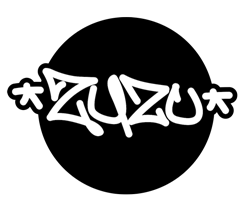As T.K.V Desikachar states, “The quality of our breath is extremely important because it expresses our inner feelings.”
If you’ve ever been to a yoga class, you’ve probably heard something along the lines of, “take deep Ujjayi breaths” or “let your breath sound like an ocean wave.”
Ujjayi Pranayama is a type of breath work that is commonly used in various styles of yoga but is rarely explained thoroughly enough for practitioners to truly understand.
It is an ancient yogic breathing technique that is used as a powerful tool to advance your yoga practice. When done correctly, it calms the mind and inspires deep inward exploration. Like all elements of yoga, it requires practice, patience, and an open mind and heart.
Ujjayi Pranayama, The Victorious Breath
Pronounced: ooh-JAH-yee prah-nah-YAH-mah
Ujjayi: Sanskrit prefix “ud” and the root “ji”, combined together as, “ujji”, which means “one who is victorious.” Ujjayi breath is translated as the “victorious breath.”
Pranayama: Sanskrit “prana” meaning “life force” or “vital energy” and “ayama” which is to “control” or “extend.” Therefore, pranayama is to “control the breath.”
Type of Yoga Practiced In: Hatha, Ashtanga, Vinyasa, and Power Yoga
Benefits: Ujjayi Pranayama is both energizing and relaxing as it sends fresh oxygen throughout the body. When practiced correctly it will create internal heat and give you an uplifting boost of energy. It’s also used to increase the flow of prana (life force energy) in the physical body. This form of pranayama (breathwork) creates friction in the throat which causes the breath to sound like ocean waves crashing on the beach.
Why is the breath being audible so important? It serves as a focal point during your practice, settling the fluctuations of the mind and bringing more awareness to the internal body, mind, and spirit. Thus, Ujjayi increases concentration while reminding one to surrender and find ease throughout the practice.
Ujjayi breath can be practiced both on and off the mat. Next time you’re feeling stressed or uneasy, practice your Ujjayi breath for a few minutes to calm both the physical and emotional bodies.
Get Started:
Sit in a comfortable seat and close the eyes for a few slow deep breaths. Take a few moments to deepen the breath and find an even length inhalation and exhalation.
Bring your awareness to where the breath goes as it enters the body. Ujjayi breath is a diaphragmatic breath, filling the belly and then lungs on the inhale. Practice filling the belly, then lungs, taking a brief pause at the top of the inhale, and emptying the lungs and then slightly contracting the belly to release air from the belly. Notice the slight pause again at the bottom of the exhale.
Maintaining this diaphragmatic breathing, begin deep breaths in through the nose and exhale out the mouth, as you imagine you were fogging up a mirror with your breath. Your exhale should make the sound “haaaaah.” Practice this a few times.
Continue this breath, but this time, seal the lips and create the same “haaaaah” sound with the mouth closed. You should notice the slight constriction in the back of the throat, which narrows the passage of air for longer and slower breath cycles.
Keep the mouth sealed as you breathe in and out cultivating an oceanic sounding breath, in and out through the nose. This is Ujjayi Pranayama!
Length of Practice: Ujjayi Pranayama can be used throughout the duration of your yoga asana practice. Begin the warming breath in your meditation at the beginning of class. As you move from pose to pose, keep the awareness on the even breath cycles to keep the mind clear. When it comes time to rest in Savasana, return to normal breathing in and out the nose.
Speed of Practice: The length of inhalations and exhalations should be even in length and speed. Ujjayi breath is a slower form of pranayama due to the constriction in the back of the throat. Try to keep the breath on a continuous cycle of five-seven counts in and five-seven counts out.
Recommended Asana: Explore various poses and styles of yoga using Ujjayi pranayama. All yogis are different and each time we step on our mat is an opportunity to explore our breath and body. Always honor your body while practicing. Ujjayi pranayama can be practiced during all poses until Savasana.
Fun Facts: Ujjayi Pranayama is often referred to as the “Darth Vader breath,” due to the sound it makes.
The breath is a direct response to how you feel and think. When you’re nervous, scared, stressed, or sad, the breath will reflect this by being shallow, shaky, and uneven. When you’re calm, happy, and balanced, the breath will mimic these qualities.
The resistance of airflow when using Ujjayi helps maintain the elasticity of the lungs.

